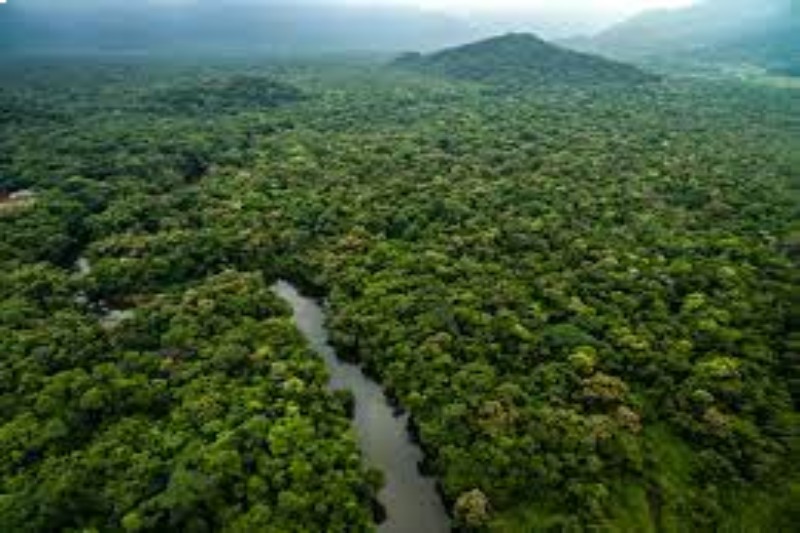Deep under the Amazon jungle, archaeologists have found evidence of a vast network of 2,500-year-old towns.
The highly constructed pre-Hispanic settlements, with broad avenues and long, straight highways, plazas and clusters of monumental platforms were located in the Upano Valley of Amazonian Ecuador, in the eastern foothills of the Andes, according to a study.
The finding of the earliest and greatest urban network of built and dug features in the Amazon so far was the product of more than two decades of study in the region by the team from France, Germany, Ecuador and Puerto Rico.
Fieldwork preceded the advent of a remote sensing technique known as light detection and ranging, or lidar, which employed laser light to find structures beneath the dense canopies of trees.
The discovery was deemed “incredible” by lead research author Stéphan Rostain, an archaeologist and director of Research at France’s National Center for Scientific Research (CNRS).
‘Advanced engineering’
“The lidar gave us an overview of the region and we could appreciate greatly the size of the sites,” he told CNN Friday, adding that it showed them a “complete web” of dug roads. “The lidar was the cherry on the cake.”
According to Rostain, the earliest residents lived there 3,000 years ago and had modest, scattered homes.
However, the authors of the study claim that the Kilamope and later Upano cultures started to construct mounds and place their homes on earthen platforms between 300 and 600 CE, roughly 500 BCE. The layout of these platforms would center on a small, square plaza.
Within the southern half of the 600-square-kilometer (232-square-mile) area studied, LiDAR data showed more than 6,000 platforms.
According to the study, the platforms were roughly 20 meters by 10 meters (66 feet by 33 feet) and were primarily rectangular, while a couple were spherical. Usually, they were constructed in clusters of three or six surrounding a plaza. There was frequently a central platform in the plazas.
Additionally, the team found enormous complexes with far larger platforms, which they speculated likely served a ceremonial or civic purpose.
There were found to be at least fifteen clusters of structures classified as settlements.
Roads were blocked close to some of the larger complexes, and ditches shielded certain settlements. This implies that there were dangers to the settlements, which might have been caused by outside forces or intergroup conflict, the researchers added.
Pathways connected even the most remote structures, as did a vast system of wider, curb-protected, straight highways.
In the empty buffer zones between complexes, the researchers observed indications of land cultivation, such as drainage fields and terraces. The investigation indicated that these were connected to a system of walkways.
“For that reason, I call this garden cities,” said Rostain, who added: “It’s a complete revolution in our paradigm about the Amazon.”
“We have to think that all the Indigenous (people) in the rainforest were not semi-nomadic tribes lost in the forest, looking for food. They’re a big variety, diversity of cases and some were also with (an) urbanistic system, with (a) stratified society,” he said.
The study’s authors stated that the Upano Valley’s garden urbanism “provides further proof that Amazonia is not the pristine forest once depicted,” citing the general arrangement of the communities as evidence of “the existence of advanced engineering” at the period.
According to Rostain, pre-Columbian Amazonia should be visualized as “like a nest of ants,” with everyone engaged in various occupations.
Similar locations in the Americas
This newly discovered urban network aligns closely with other sites that have been found across the tropical forests of Panama, Guatemala, Belize, Brazil and Mexico, according to landscape archeologist Carlos Morales-Aguilar, a postdoctoral fellow at the University of Texas at Austin, who was not involved in the study.
He called the study “groundbreaking,” telling “provides concrete evidence of early, advanced urban planning in the Amazon but also contributes significantly to our understanding of the cultural and environmental legacy of Indigenous societies in this region.”
As part of a study team in 2022, Morales-Aguilar discovered a massive site in northern Guatemala using LiDAR. This site included a network of raised stone routes spanning 110 miles (177 kilometers) and hundreds of ancient, interconnected Mayan cities, towns, and villages.
The results of this most recent study, he claimed, “offer new insights into the complexities of these early societies” and “mirror the advanced techniques in agriculture and urban planning that he observed in northern Guatemala.”





